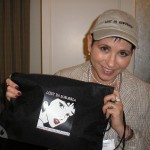Paneling for the Benchley Den
 By
By
Ben S. Pollock
NSNC President
Once again, an NSNC columnist conference astounded its audience with information and fun. The June 23-26 session in Detroit catered to would-be and published book writers, gave fresh tips to free-lancers (and in “custom content” not just columns), took on humor and twisted its elbow, and even looked ahead to political coverage next spring.
Here are the overall lessons learned from “Rebound in Motown.”
1. Branding is real, and it works. We’re writers so find a synonym — style, specialty, etc. — if you don’t like the artifice of brand.
2. Straight columns need research, even humor and personal columns are enriched by research as well.
3. Humor columns require jokes. Many nice people on the panels danced around the popularity of anecdotal columns to write, mention they don’t read well and rarely sell well. Jokes require punch lines, and punch lines require meticulous crafting.
Mirror: How did you find Detroit, Mr. Pollock?
Myself: The city of Detroit was about as I expected, yet better. It had its decline later than other Rust Belt cities and so its renaissance began later. It’s not quite fair to compare it to a place like Pittsburgh — yet. Businesses and residents
are returning to the heart of Detroit, and we saw that.
The “better” part was how solid the street planning and old buildings are. The architecture of the high-rises is from many of the best decades of American design, built by people with the money to not blame budget overruns for any short-cuts. The streets are wide. There’s a lot of outdoor sculpture. Grand statues of great leaders. It’s like Kansas City, another Midwestern city famous for its public art.
Mirror: But what about its reputation?
Myself: I lived in Little Rock for many years. Just last May, Arkansas’ capital continued its surprising reputation by continuing to stay apace with Detroit and eight other cities as being on the FBI Top 10 List for violent crime.
We’re working on it, they’re working on it.
Meanwhile, there’s the Detroit Institute of Arts and other cultural high points. They’re enviably strong.
Mirror: What about the highlights of the conference itself?
Myself: I knew it would happen. The conference marked the end of my first year as president. Having watched other prexies, I knew I couldn’t sit for hours at a time and take notes on all the great speakers but would be called away on conference business. I missed too much: All of writing coach Don Fry’s second session, and most of Mary Curtis’ panel on covering the coming campaign season, the last being what I most wanted to see. Fortunately, other columnists took notes, and their summaries can be found at www.columnists.com/?p=10701 .
That said, I avoided any interruption to “How to Become an Algonquin Wit,” focusing on my hero, Robert C. Benchley.
Those familiar with him know of his contributions in the first years of “The New Yorker” — not unlike being an original cast member of “Saturday Night Live.” Ken Voyles explained that as a model free-lancer and champion networker, Dear Ol’ Bob found another income fountain in the 1930s with the newsletter of the Detroit Athletic Club.
Our 2011 Columnist of the Year, W. Bruce Cameron, noted, as he has before, of two kinds of humor writing, essay-length series of connected jokes, and columns of anecdotes.
Cameron believes the highest success comes from the former category, but make no mistake, it’s work, the hardest part being the opening, with a good joke and placing its punch line after the setup. The conclusion needs a setup then punchline. The middle needs a lot of jokes, too.
The latter kind of humor writing either leaves out punch lines or plops them willy-nilly.
The exception — and isn’t there always? — can be seen in Benchley pieces. Voyles said Benchley’s usual style was to open the essay with a punch line then tear it up, walk you through its deconstruction and usually tear himself up in the process.
I have read and studied Benchley and his drinking buddies for three decades, and Voyles’ was the best analysis ever.
Cameron meanwhile praised the Internet because the huge amount of available content forces the audience to be discerning and choose the best. Later, Cameron noted the key problem of 21st century free-lancing was to keep self-marketing from stealing your writing time. Amen, brother.
 In “Building Your Brand,” Tracy Beckerman found it doesn’t hurt a bit to create logo tote bags and caps and give them in media kits to prospective editors.
In “Building Your Brand,” Tracy Beckerman found it doesn’t hurt a bit to create logo tote bags and caps and give them in media kits to prospective editors.
Cameron, ever the canary leading the way for us, albeit wearing a haz-mat suit, found branding success in temporarily de-emphasizing his name as the brand for a few months and promoting the new book, in this case his first published novel “A Dog’s Purpose.”
Along that line of thought, Cameron further suggested using Facebook and similar social media to engage in conversation with readers and potential book buyers, encourage their participation. Generally, people with brands use such sites act as monologues listing book tour sites and the like. His way makes sense, call it Branding 2.0.
The conference’s opening panel was perhaps its most colorful. “Crusading Columnists.” No family bloggers were the dais but storytelling veteran reporters.
Concrete suggestions came from Stu Bykofsky of the Philadelphia Daily News.
Byko said crusading columnists can be found in any genre, not just metro or investigative. All have in common his “Four R’s”:
Reporting or research — It’s OK to use others’ work, but one’s own reporting enriches the copy.
Ridicule — Humor (specifically sarcasm) grabs readers even if they’re not initially interested in your topic.
Rage — Anger is why this sort of column gets produced.
Repeat — Returning to a topic, doing follow-ups, is normal. Revisiting a subject, an anniversary piece etc. No subject never quite ends. Of course, keep it fresh.
Mirror: You write conference summary every year for your blog, no?
Myself: Yeah. But since Stu says repeating is vital, I’m good. There’s the (self-) ridicule. You see the reporting. Where’s the rage? Not in this piece, brother!

